Pakistan and India in Dam Building Race — Interpreting the Indus Waters Treaty
A new era of dam building brings uncertainty to the 50-year-old water truce between India and Pakistan.
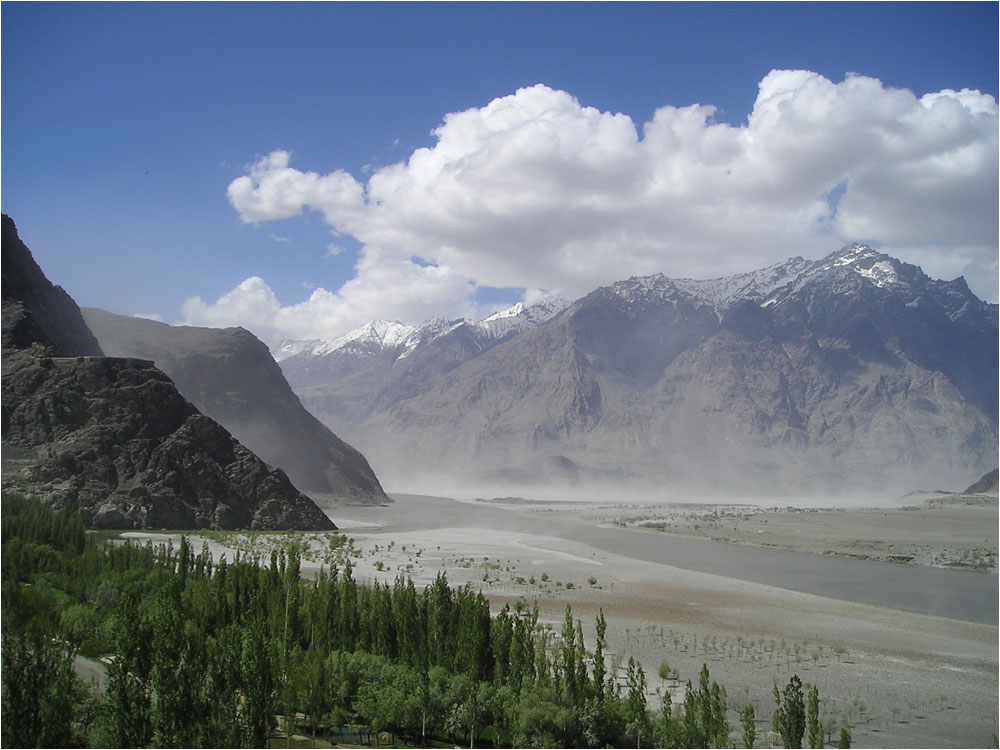
The Indus River is Pakistan’s lifeline, the main source of water for the world’s largest irrigation system. Photo © Birendra Bajracharya/ICIMOD, 2006
By Brett Walton, Circle of Blue
In Kashmir’s Neelum Valley, part of which is controlled by India and part by Pakistan, a high-stakes engineering race is taking shape. The rival countries are building hydroelectric power plants on the Neelum River, an Indus River tributary that has long been a source of agricultural and geopolitical strife.
Now a half-century old treaty, the Indus Waters Treaty (IWT), that governs water relations in the shared river basin is under stress as never before. Depending on how the treaty is interpreted in an ongoing legal case, the first side to finish its dam–either India’s Kishanganga project or Pakistan’s Neelum-Jhelum project–could gain a plum prize: priority rights on the Neelum.
Secretary Clinton Announces Pakistan Water Program
India and Pakistan Dispute Water Use for Hydropower, Agriculture
Pakistan Raises Water Issue During Diplomatic Talks with India
Pakistan Negotiates Domestic, International Water Disputes
India’s Leaders Argue Over River Linking Plan
Water Projects Emphasized in $7.5 Billion-U.S. Aid Package to Pakistan
With water near the top of Pakistan’s foreign policy priorities and with so many other flash points in the region pivoting on the water issue –Kashmir, terrorism, Afghanistan– there is every indication that the countries are entering a tumultuous period in the treaty’s history.
Signed in 1960 to allocate the basin’s water, the IWT is widely cited as a model of exemplary cooperation in an often fractious bilateral relationship. But because of India’s development plans, there is reason to believe that old amity is being supplanted by mistrust and suspicion. Discord over water pits India’s drive for electrical power against Pakistan’s vast irrigation needs and vulnerable geopolitical position on the river system.
The legal skirmishing is just beginning. Pakistan filed a ‘dispute’ in May 2010 against the Kishanganga project–the third and highest category of contention in the treaty’s language. A seven-member international arbitration panel is being assembled to hear the case, the first to be taken to such a level. The ruling isn’t expected for several years. Depending on how the panel decides, the existence of the Kishanganga project could become the latest escalation for political tensions in the subcontinent.
The case marks the second time in the last five years that upper-level conflict resolution procedures have been invoked. The 450-megawatt Baglihar hydropower plant was the first case to be resolved by a neutral expert, who ruled in favor of India in the key issue of spillway design. The current dispute is the first to be heard by an arbitration panel–India’s hydroelectric ambitions seem to guarantee that it will not be the last.
Robert Wirsing, a professor at Georgetown University’s School of Foreign Service in Qatar who studies South Asian water issues, says India is considering building 33 dams on parts of the Indus and its tributaries granted to Pakistan. India is allowed to use a small portion of the rivers for storage projects, but the distrust between the countries and the scale of development leave much to worry about, he said.
“It’s a phenomenal piece of work. But it’s unrealistic because the Indians haven’t really gotten started [building dams]. And they have now started big time.” — Robert Wirsing
South Asia Water Issues Specialist
“Most [dams] are in the planning stage,” Wirsing told Circle of Blue, “and some will never be built. But that’s a lot of stuff up there. And that’s the problem.”
“There is a comforting notion,” he added, “that this was a really good treaty, and in my judgment it is. It’s a phenomenal piece of work. But it’s unrealistic because the Indians haven’t really gotten started [building dams]. And they have now started big time.”
An Agreement Borne from Division
The new dams being built in a contested region on the Neelum incorporate technically complex, wide-bore tunnels that are several dozen kilometers long. Both are estimated to be six to eight years from completion. In the meantime, the wrangling for the river is being litigated under the conflict resolution mechanisms stipulated by the IWT.
The treaty’s genesis dates to partition. When the British Raj left India in 1947 and Pakistan was sliced from its western provinces, division of the Indus basin waters was not well considered in the rush to leave. This was a major problem as it left Pakistan at India’s mercy for irrigation deliveries during a time of deep animosity. For years after partition, troops from both countries were garrisoned at canal headworks along the border. The irrigation system they watched with eye and gun is the largest such agricultural scheme in the world, roughly 30 million hectares total–60 percent of which lies in Pakistan.
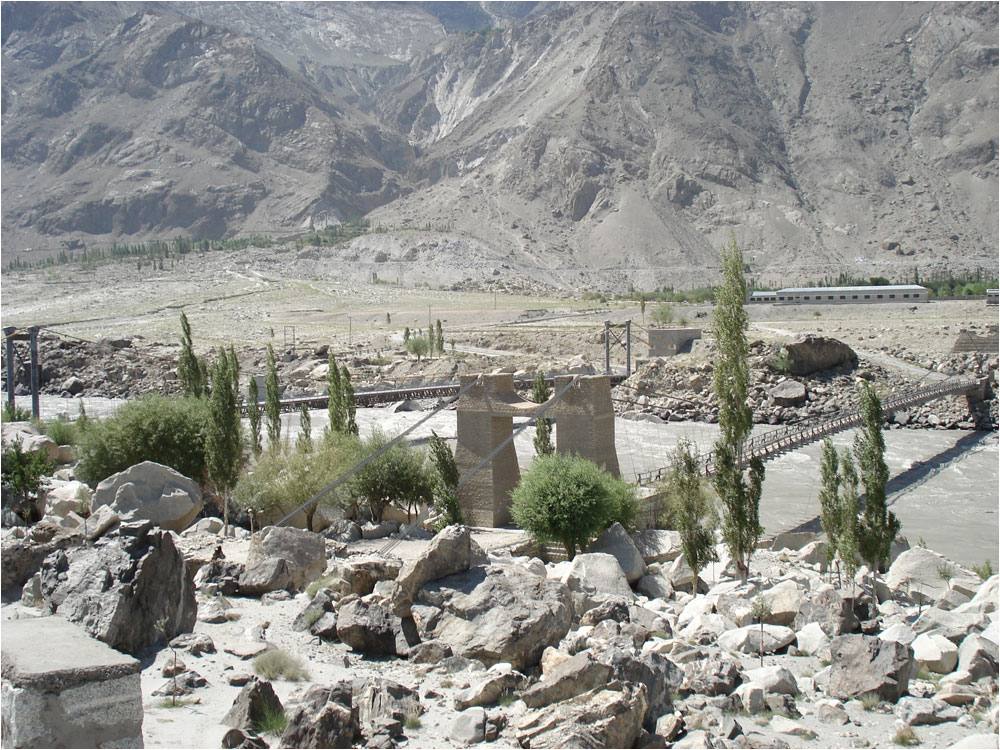
The Indus River, shown here near Skardu, is the main source of water for Pakistan’s 18-million-hectare irrigation system. Photo © Birendra Bajracharya/ICIMOD, 2006
A compromise called the Standstill Agreement was enacted in the fall of 1947, keeping water allocations as they were before partition. When the agreement expired on March 31, 1948, India promptly withheld water deliveries to Pakistan on two main irrigation canals the very next day.
Several interim agreements were signed without a satisfactory conclusion. Further negotiations were stalling when David Lilienthal, a former chairman of the Tennessee Valley Authority, wrote an article in Collier’s in 1951 suggesting the problem could be solved through technical and economic evaluations. Lilienthal recommended that the World Bank play a role as a neutral facilitator. Lilienthal’s friend, Eugene Black, president of the World Bank at the time, read the article and decided to give it a try.
At the time, the World Bank was a relatively young institution, less than a decade old, and feared that perpetual conflict between two of its principal clients would endanger its lending programs in the region, Salman M. A. Salman, a Word Bank water law expert, told Circle of Blue.
Negotiators focused on key disagreements about allocations, technical specifications, and financing. The deal that emerged granted India primary use of the eastern rivers of the basin (Beas, Ravi, and Sutlej) and Pakistan the same rights to the western rivers (Chenab, Indus and Jhelum). Both sides were also permitted nonconsumptive rights to the other country’s three rivers–Pakistan was allotted agricultural use on the Ravi, while India was given restricted storage capacity for hydropower development on all three Pakistan rivers, minding that large amounts of water are not retained or redirected. Storage restrictions were crucial for Pakistan to feel secure that India would not be able to manipulate river flows.
“[It is] one bright spot…in a very depressing world picture.” — President Dwight Eisenhower, on the Indus Water Treaty
The allocations meant that water rights and land use patterns were thrown out of historical balance. To move its new water sources to the fields in Punjab and Sindh provinces, Pakistan would need to build two mega-dams, five barrages, and eight linking canals–at a total cost of US$1 billion 1960 dollars.
The money to reconstruct the canal system came from several sources. India paid $174 million and Pakistan offered a symbolic token, but the lion’s share came from the United States and a group of five other Western countries in the form of grants and loans.
With one particularly long and pointed thorn removed, peace, it seemed, now had a chance.
At a news conference in Washington D.C. preceding the signing ceremony in Karachi in September 1960, President Dwight Eisenhower remarked that it was “one bright spot…in a very depressing world picture.”
Hungry for Energy
The question now is whether or not the treaty will hold.
India, like a child without vitamins, lacks sufficient energy resources to grow at the pace the country desires. The peak electricity supply–125,000 megawatts–fell 12 percent short of demand in 2005 and 2006. Electrical capacity must grow 10 percent annually to keep up with demand, according to a study by the Asian Development Bank. These figures reflect just those with electrical access; nearly 40 percent of Indian homes, some 400 million people, do not have reliable electricity. As India grows, extending grid coverage will be a priority. But India has already fallen behind on its Power-for-All Plan, which would add 78,000 MW by 2012.
In India, hydropower generates 32,000 MW and comprises a quarter of the nation’s energy capacity. The country has the potential for 84,000 MW, but only one-fifth of that has been developed. The most promising sites, however, are located in contested regions–in the northeast, where there is a border dispute with China over Arunachal Pradesh, and in Jammu and Kashmir, through which the Indus flows.
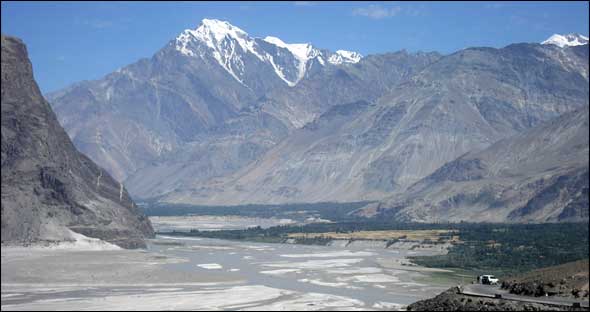
The Indus Valley near Skardu, Pakistan. The Indus is one of the three western rivers granted to Pakistan under the Indus Waters Treaty. Photo © Birendra Bajracharya/ICIMOD, 2006
Kashmir presents conflicting pressures on both the domestic and international fronts, says Uttam Sinha, a research fellow at the Institute for Defense Studies and Analysis, a hawkish Indian think tank funded by India’s Ministry of Defense.
Kashmiris demand that the Indian government build more dams to speed up local development, but those dams come at the expense of relations with Pakistan, Sinha told Circle of Blue.
Many in Jammu and Kashmir (JK) feel that their interests are superseded by Pakistan’s under the IWT. The Chief Minister of Jammu and Kashmir says that the state was not fully compensated by the national government for economic losses created by the IWT. In October, the JK Legislature passed a bill to tax water used to generate power. The burden will fall mainly on the National Hydroelectric Power Corporation, India’s national utility.
The Race is On
Pakistan’s 969-MW Neelum-Jhelum project (NJP) is 160 kilometers downstream from the Kishanganga project and is located on a tributary of a river granted to Pakistan under the IWT. A 28-kilometer tunnel will divert water from the Neelum to the NJP dam’s powerhouse. The engineering firm that won the US$1.5 billion contract, China Ghazoba Group of Companies, has slowed down construction because of inefficient tunnel-boring machines, according to Pakistani media reports. The project will be completed in 2018, two years behind schedule, at the current pace.
This has drawn much ire from Pakistani officials because India may gain priority rights on the Neelum with the Kishanganga project, with current target date of 2016.
The relevant section of the IWT is annexure D, paragraph 15, clause iii, which allows India to divert waters from tributaries of the Jhelum to another tributary only to the extent that it does not adversely effect an existing use in Pakistan.
If Pakistan’s NJP is first to the line, it can establish a pre-existing use on the river and claim that India’s planned diversion will cause it undue harm, said Neda Zawahri, a political science professor at Cleveland State University, in an interview with Circle of Blue.
Pakistan argues that the Kishanganga project will reduce flows by 15 percent to 20 percent and limit the NJP’s power-generating potential, resulting in an annual loss of US$400 million.
“…I don’t see this dispute as the end of the Indus Waters Treaty. On the contrary, both states have an interest in maintaining it.” — Professor Neda Zawahri, Political Science Department Cleveland State University
A dispute has already been registered under the IWT. Stephen Schwebel, a former president of the International Court of Justice, was selected in October to lead the seven-member arbitration panel.
Historically, conflicts have been worked out by the Permanent Indus Commission, a bilateral body. For example, disagreements over the design of Salal Dam were settled this way in the 1970s.
The Baglihar Dam controversy in 2005 was taken to a second level of adjudication, which is mediation by a neutral expert. Pakistan objected that the dam did not meet the treaty’s design specifications for spillways, intakes, and gates. In its rebuttal, India claimed that new designs were needed to deal with siltation problems.
The World Bank-appointed expert Raymond Lafitte, a Swiss engineer, ruled in favor of India on three of six objections. Robert Wirsing, the Georgetown professor, thinks Lafitte missed an opportunity to hit on a solution that would balance technical considerations with the spirit of the treaty.
“His concern was that this be a good dam,” Wirsing told Circle of Blue. “Of course, that ran right up against the Pakistani feeling that what was important was the treaty and the treaty’s purpose, which was conflict prevention.”
John Briscoe, a former World Bank water adviser and now a professor at Harvard, argues that the ruling reinterpreted the treaty to mean that the physical limitations no longer applied in light of modern technical standards, removing Pakistan’s main protection against India meddling with the river flows.
Resolution of the Kishanganga dispute will take several years. In the meantime, debate will continue about how well the Indus Waters Treaty can stand up to new circumstances.
Cleveland State professor Zawahri thinks both sides still benefit from the agreement: “As long as they continue to use the conflict resolution mechanisms available in the treaty, the treaty will survive. So I don’t see this dispute as the end of the Indus Waters Treaty. On the contrary, both states have an interest in maintaining it.”
Wirsing is less optimistic: “If this panel decides that India’s Kishanganga project is okay and that Pakistan has to swallow this one too, that will, I think, drain the Pakistanis of any lingering enthusiasm for this treaty and its prospects for defending them against dams planned in India.”

Brett writes about agriculture, energy, infrastructure, and the politics and economics of water in the United States. He also writes the Federal Water Tap, Circle of Blue’s weekly digest of U.S. government water news. He is the winner of two Society of Environmental Journalists reporting awards, one of the top honors in American environmental journalism: first place for explanatory reporting for a series on septic system pollution in the United States(2016) and third place for beat reporting in a small market (2014). He received the Sierra Club’s Distinguished Service Award in 2018. Brett lives in Seattle, where he hikes the mountains and bakes pies. Contact Brett Walton

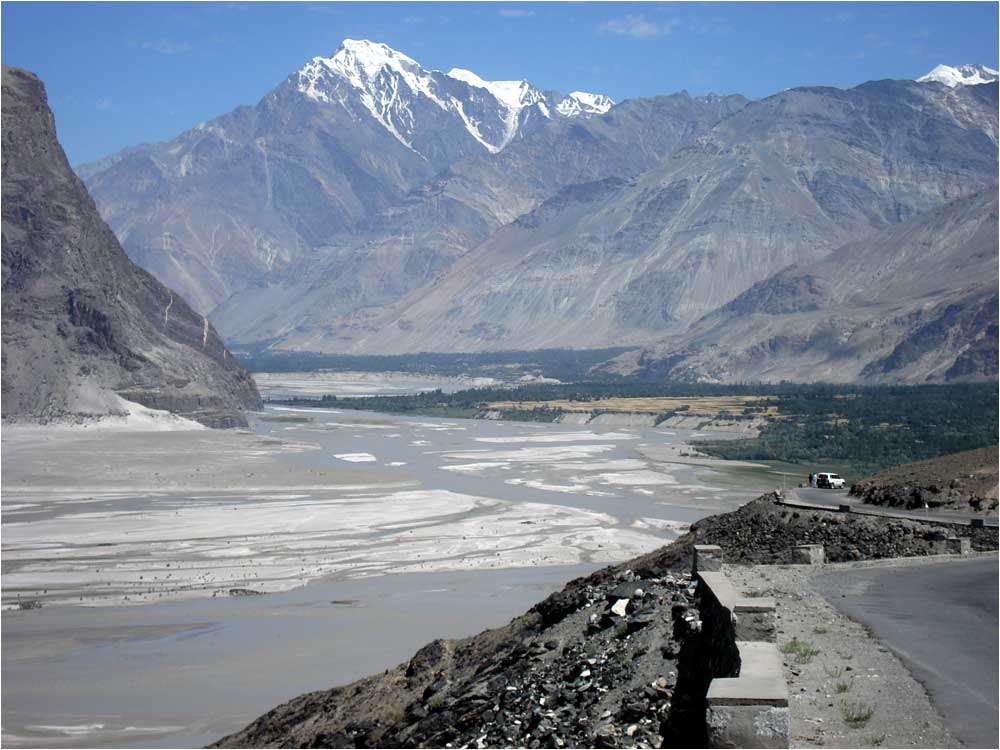


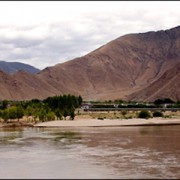
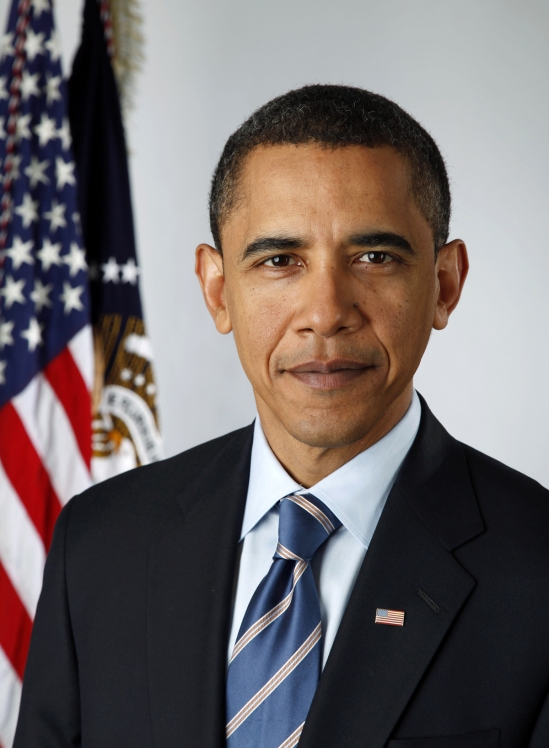

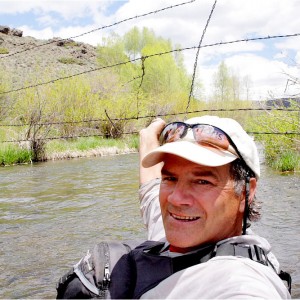

I think the dams which are build by Pakistan and India are against Eco system specially against the trout fishes.
indus water treaty is an example of cooperation and proved itself conflict prevention mechanism succefully in past but facing new emerging challenges as climatic variations,population,scarcity,energy demands and other actors(china,afghanista,kashmir),there is need to revisit the treaty according to new circumstances.